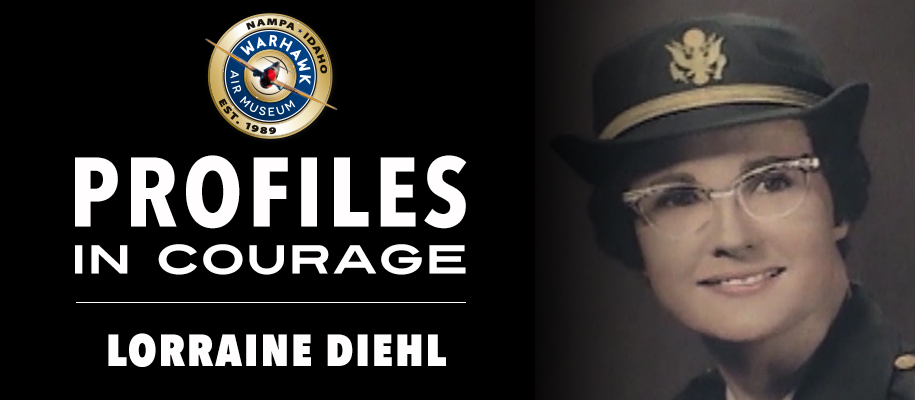
Posted On: August 25, 2023
Lorraine W. Diehl was born and raised in Mont Clare, Pennsylvania. She attended high school in the nearby town of Phoenixville and graduated in 1963. She then went to work at a hospital in Philadelphia and studied for three years to become a registered nurse, graduating in 1966. Lorraine moved back to Phoenixville and worked at the Valley Forge Army Hospital as a civilian nurse. After her first husband passed away, a conversation with some of the Army nurses at the hospital convinced Lorraine to join. On March 27, 1968, Lorraine was commissioned as a 1st lieutenant in the U.S. Army Nurse Corps.
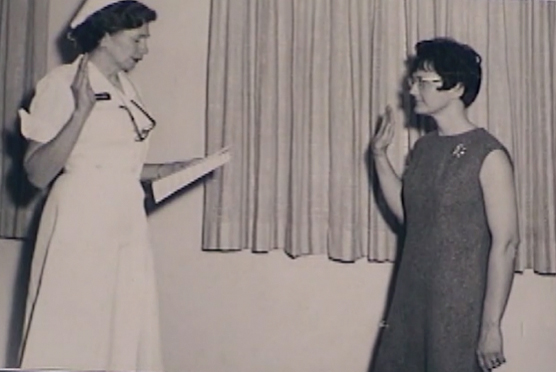
For the next six weeks at the Medical Field Service School at Fort Sam Houston in San Antonio, Texas, she learned how to salute, march (because of her experience in her high school marching band, she found marching to not be so bad), read a map, and studied military history and field nursing.
May 3, 1968: Off to Vietnam
“I love to fly, but as the plane was making its descent over Tan San Nhut airfield outside Saigon, I began to get the jitters and for the first time began to realize that there was a real war going on down there and I was going to be part of it. ‘What have I gotten myself into?’ I asked.”
May 1968: Lorraine Lands at Tan Son Nhut airfield in Vietnam
Lorraine was the only female nurse being processed when she arrived in Vietnam and was assigned to a small trailer at the far end of the Tan Son Nhut airfield to await her assignment. She recalled how the sounds of gunfire, rockets, bombs, and planes landing and taking off frightened her so much she did not leave the trailer for two days, not even to go to the mess hall! She ate snacks she had with her and on the third day, a jeep came and took her to the headquarters where she received her assignment. She was to go to the 67th Evacuation Hospital in Qui Nhon.
The 67th Evacuation Hospital in Qui Nhon was one of the first hospitals set up at the start of the war and had permanent buildings, refinements, P.X., chapel, barber shop, post office, Red Cross rec hall, cement sidewalks, and grass. The nurses’ quarters were about 50 feet from the end of the runway. When the jets were preparing for take-off, they could feel the heat and vibrations of the jet engines in their rooms.
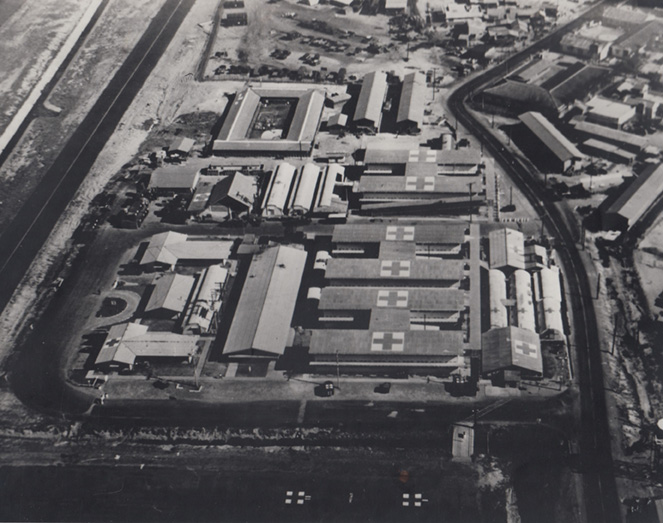
67th Evacuation Hospital, Qui Nhon, Republic of Vietnam, 1967.
There were two nurses and two corpsmen running a ward of 50 beds. Still, they did what they had to do, working 12-hour shifts to help those that needed them. Lorraine’s patients suffered from back injuries, dysentery, heart problems, skin rashes, pneumonia, sunstroke, and “combat fatigue.”
“The stress of being in an impossible situation, fighting an impossible war caused mental breakdowns. It was hard for young men to stay mentally healthy when they were taken from their homes and sent to a strange, hot, insect-infested land, trudging around in rice paddies, getting shot at, and seeing their buddies blown to bits in front of them.”
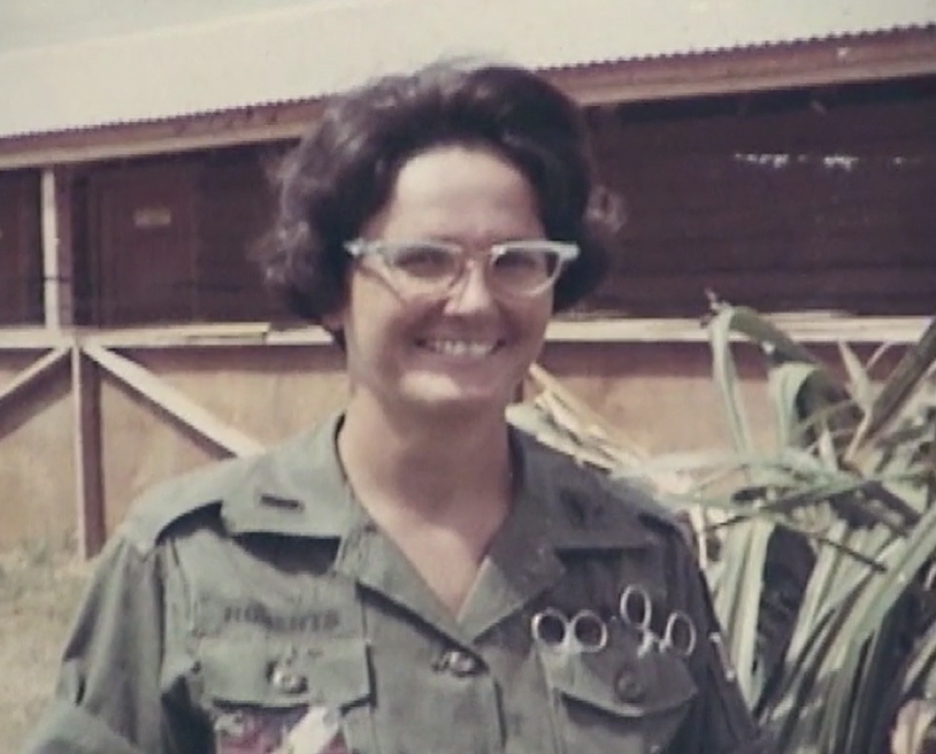
November 1968: Lorraine is Transferred to 312th Evacuation Hospital in Chu Lai
After being in Qui Nhon for five months, Lorraine was transferred to Chu Lai to the 312th Evacuation Hospital—a reserve unit called to duty from Winston-Salem, North Carolina. This hospital was not like the one in Qui Nhon; it was miles from any town and the buildings were tents, Quonset huts, or wood cabins. Lorraine mentions that the hospital at Chu Lai was in the Quang Ngai Provence, and they were closer to the fighting, seeing casualties almost every day. They were often on “Red Alert” (which means fighting was close by) and would often sleep wearing flak jackets and their helmets placed under their cots. Even when working, they would often wear their flak jackets and helmets. It was already hot out and the helmets were heavy, but they had a job to do.
The Vietnamese hospitals did not have the proper equipment to treat their patients, so at the hospital in Chu Lai, Lorraine and her unit also helped Vietnamese civilians. They treated head wounds, chest injuries, massive abdominal wounds, amputations, typhus, typhoid fever, diphtheria, malaria, polio, tuberculosis, tetanus, lice, and severe malnutrition. Lorraine says that if these patients were in the U.S., they would be in intensive care. Nearly everyone had an I.V., nasogastric tube, chest tube, and endless amounts of dressings.
“Because of these poor facilities to care for local civilians, our 400-bed Army Hospital set aside a 50-bed ward to care exclusively for Vietnamese. I became the head nurse on this unique ward and learned more in the 10 months I spent there than I could have learned in 10 years back home.”
The Army set up a training program for Vietnamese civilians to help the medical staff at the hospital. Lorraine helped train them in her spare time, though she still worked 12 hour shifts, six or seven days a week. The training was worth the extra time, though, as it resulted in well-trained nurse’s aides freeing up Army medics. The Vietnamese custom of most of the family accompanying a loved one to the hospital meant they would camp out in the ward—so Lorraine also trained family members to help with feeding, running errands, cleaning, and making beds. She also trained military police to help when a North Vietnamese prisoner of war was receiving treatment.
Not Even Hospitals Were Off Limits to Rocket Attacks
During an attack, there were sandbag bunkers for staff to run to at night if they were in their quarters. If they were on duty, patients who could be moved would be placed on the floor under their beds, and those who could not had a mattress placed over them for protection. The nurses would crawl on their hands and knees taking care of patients until the “all-clear” sounded.
Lorraine mentions two separate occasions where the hospital in Chu Lai took direct hits from rocket attacks. The first attack happened at night and destroyed a dental clinic. A soldier on guard duty was injured by a piece of flying glass, but no one else was hurt. Months later, there was a second rocket attack in the early morning hours that hit right in the middle hallway section of Lorraine’s ward. Patients and staff died in this attack.
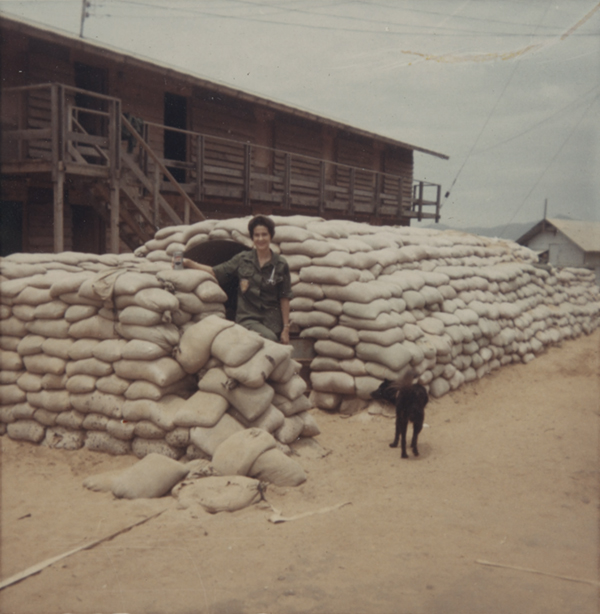
Exterior view of the 312th Evacuation Hospital in Chu Lai, Vietnam, 1969.
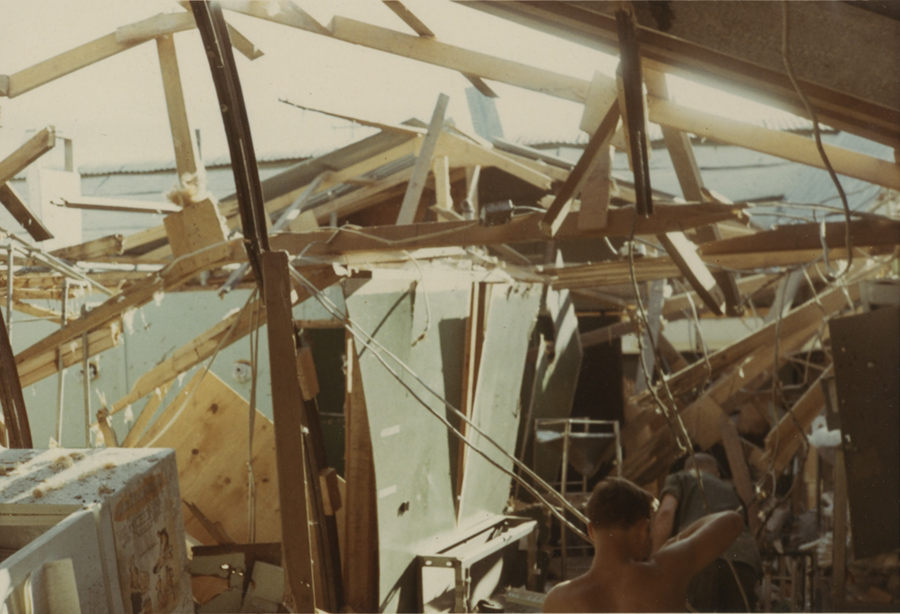
The aftermath of the rocket hit between Wards 4a and 4b of 312th Evacuation Hospital in Chu Lai.
“Flying shrapnel, exploding oxygen tanks and the ensuing fires caused six deaths and 15 injuries. The ward was hit at about 6AM, just about an hour before I would have come on duty. In fact, I was just getting out of bed when I heard the explosion. A piece of shrapnel hit the nurse on duty in the neck, severing her carotid artery and she bled to death before she could be dug out from the rubble. This young friend of mine, Lt. Sharon Lane, from Canton, Ohio was the only American Army nurse to die in Vietnam as a result of hostile action.”
The Strength of the Vietnamese People
“The Vietnamese people were usually quite brave, even stoic. For even the severest wounds, they usually required only the minimum dosages of pain medication.”
Lorraine tells of a young woman who was admitted one night for a shattered shoulder and when Lorraine went to see her the following morning, the woman would not stop crying. She was given pain medicine but continued to be in agony. She was enveloped in plaster from the neck to the waist and her arm was upward and outward from her body. Lorraine retrieved the interpreter that worked at the hospital, and it was determined that the woman was not crying from her shoulder. She had a new baby at home and was nursing. Because her chest was encased in plaster it was causing her great pain. Lorraine stepped into action by taking the plaster buzz saw and cutting two large holes in the front of the cast. A family member was sent to the village to find her baby and within a few hours, the mother and the baby were together. The mother did not require any more morphine.
Lorraine tells of how they would sometimes need to remove layers of clothing that were adhered to the patient’s skin, causing pieces of flesh to come off too. The clothing would need to be cut off and the undergarments soaked. The nurses reached out to church groups from back home who sent boxes of used clothes to give to the Vietnamese when they were discharged. Boxes of toys were also sent from 4-H and Girl Scout groups for the children. For some children, these toys were the only toys they had ever had.
August 1969: Coming Home
By August 1969, Lorraine had been in Vietnam for 15 months and was now a captain. She met a sergeant and got married while overseas. While in Vietnam, Lorraine also volunteered with MEDCAP—a program supported by the Army that consisted of teams of doctors, nurses, and medics volunteering to help treat civilians. They could have a line of 250 to 300 people waiting to be seen.
The 312th Evacuation Hospital had been called back to Winston-Salem, North Carolina, so Lorraine came home too. The hospital was closing when they left and she was worried about the Vietnamese people. She was next assigned to the Valley Forge General Hospital in her hometown of Phoenixville, Pennsylvania—the hospital she had been working at when she originally decided to join the Army Nurse Corps in March of 1968. One year later, she resigned her commission and her military career ended. Using the G.I. Bill, Lorraine went back to school and received a degree in early childhood education and continued to work as a nurse.
“Besides all the great friendships and the never-to-be-forgotten nursing experiences that I had in Vietnam, I also learned to appreciate how wonderful it is to be an American. I learned to appreciated [sic] our many freedoms: freedom from fear, freedom from an oppressive government, freedom from hunger, freedom to get an education. Most people in Vietnam had never known when their country had not been at war and many of the freedoms we take for granted those people will never know…We all might reflect on our blessings as Americans. So many all over the world live in war and poverty, while most of us have so much, usually much more than we need.”
Lorraine W. Diehl was one of many of nurses who served during the Vietnam War. They were counted on to provide a sense of comfort and healing when surrounded by violence, rockets, and death. The patients always came first. Thank you, Lorraine.
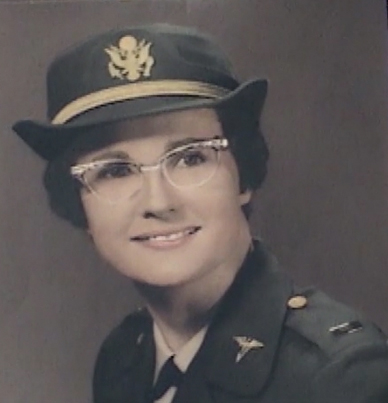
Resources:
- Warhawk Air Museum. Lorraine W. Diehl: Vietnam - Army Nurse Corps. 2008, https://warhawkairmuseum.org/explore/veterans-history-project/lorraine-w-diehl/ Accessed 26 July 2023.
- Video Notes From A Nurse Remembers, Vietnam 1968-1969 given to the Warhawk Air Museum by Lorraine W. Diehl
- BJ Kramer Collection. “312th Evacuation Hospital in Chu Lai, Vietnam.” Gateway, 1969, https://gateway.uncg.edu/islandora/object/wvhp%3A16821. Accessed 18 Aug. 2023.
- BJ Kramer Collection. “312th Evacuation Hospital in Chu Lai, Vietnam, after being hit by a rocket.” Gateway, 9 June 1969, https://gateway.uncg.edu/islandora/object/wvhp%3A16822. Accessed 18 Aug. 2023.




What an incredibly wonderful lady!
As a an Army ‘Brat’ (father (WWII and Korean War vet) stationed, with his family, on Okinawa twice and in France all between 1947 and 1960) and as Air Force vet from 1962 and 1967 supporting the B-52 bombing of the Vietnam War, from Thailand and once again Okinawa, I can appreciate Lorraine’s comments regarding those civilian’s hardships and wish all Americans could appreciate how wonderful we all have it in this greatest of all countries the world has ever known!
Not nearly enough credit to these dedicated medical personnel. Thank you!
Thanks for your great service.